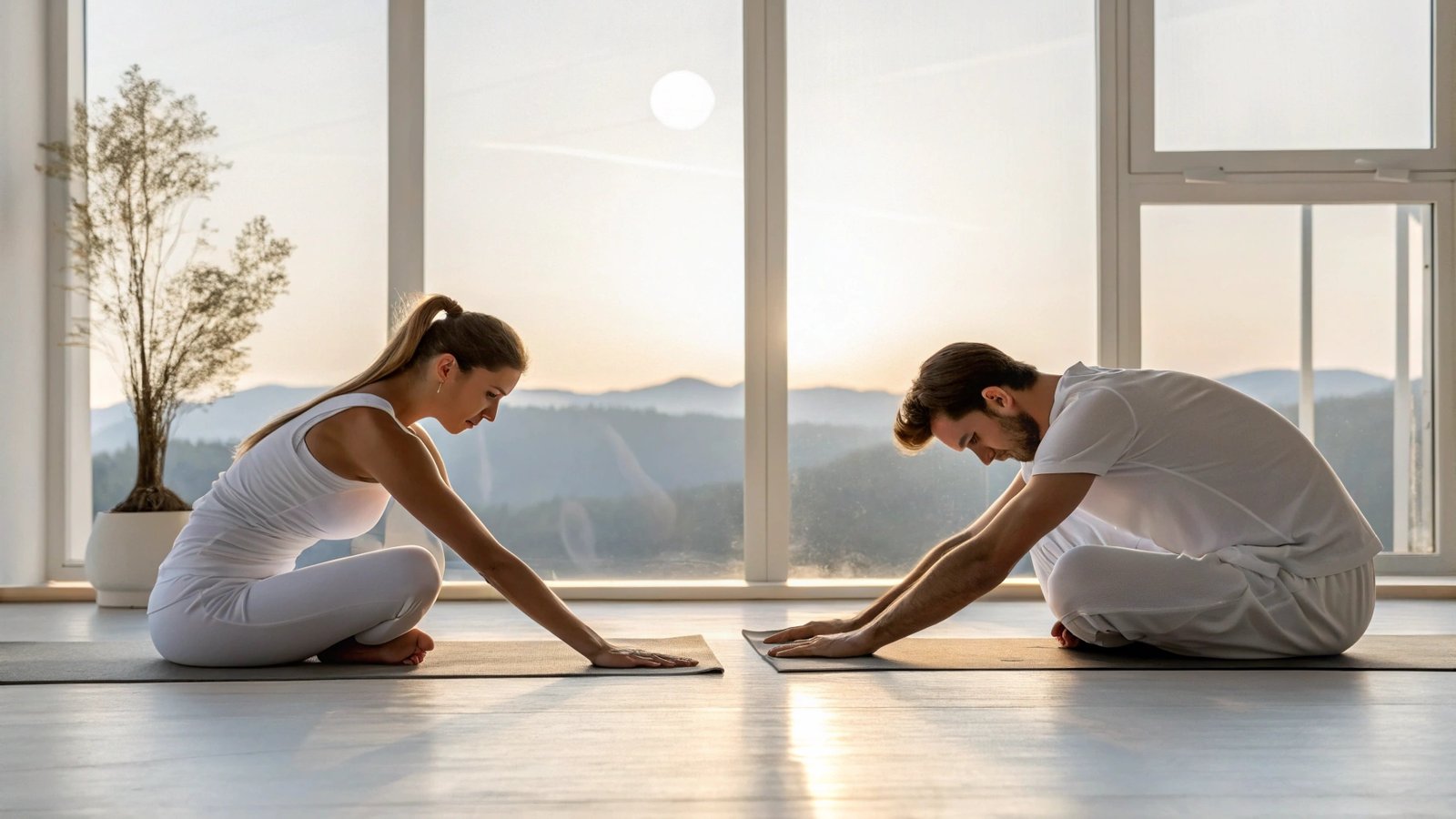Table of Contents
- What Exactly Is Hatha Yoga?
- How Is Hatha Yoga Different from Other Yoga Styles?
- What Are the Key Benefits of Hatha Yoga?
- How Can Hatha Yoga Be Integrated into a Daily Routine?
What Exactly Is Hatha Yoga?
The Origins of Hatha Yoga
Hatha yoga, originating from ancient India, is a system of physical exercises (asanas) and breath control (pranayama). The term "Hatha" is derived from the words “Ha” meaning sun and “Tha” meaning moon, symbolizing balance and harmony. Learn more about the history of yoga through various expert articles.
Core Principles
Unlike more dynamic styles like Vinyasa, Hatha yoga is known for its slower pace, focusing on holding postures for longer durations and concentrating on breathwork. It’s ideal for building strength and flexibility while creating mindfulness.
Overview of Hatha Yoga Poses
| Pose | Purpose | Benefit |
|---|---|---|
| Mountain Pose | Foundation for standing poses | Improves posture and balance |
| Child's Pose | Restorative and gentle stretch | Relieves tension and improves flexibility |
| Downward Dog | Full body stretch | Strengthens core, arms, and legs |
| Cobra Pose | Spinal extension | Opens chest and relieves back stiffness |
This slow-paced approach makes Hatha yoga a great option for beginners, though it remains challenging for advanced practitioners due to its emphasis on form and alignment.
 Hatha Yoga Harmony: Peaceful Asanas and Breath Control in Serene Setting
Hatha Yoga Harmony: Peaceful Asanas and Breath Control in Serene Setting
How Is Hatha Yoga Different from Other Yoga Styles?
Hatha vs. Vinyasa Yoga
While Vinyasa yoga involves a flowing sequence of movements synced with breath, Hatha yoga focuses on static postures and slower transitions. The pace in Vinyasa is faster, making it a more dynamic practice compared to Hatha.
Hatha vs. Ashtanga Yoga
Ashtanga is another style that includes a fixed sequence of postures performed in a fast-paced manner. Unlike Ashtanga, which is more intense and rigid, Hatha yoga allows for flexibility in practice and can be more accessible to beginners.
Which Style is Right for You?
| Yoga Style | Pace | Best For | Level |
|---|---|---|---|
| Hatha Yoga | Slow | Flexibility, balance, and mindfulness | Beginner to Intermediate |
| Vinyasa | Fast | Strength, flow, and cardio | Intermediate to Advanced |
| Ashtanga | Intense | Advanced practitioners and strength | Advanced |
If you're looking for a balanced, gentle entry into yoga with a focus on alignment and mindfulness, Hatha yoga is a great choice.
What Are the Key Benefits of Hatha Yoga?
Improves Flexibility and Strength
By holding each pose for longer periods, Hatha yoga enhances flexibility, which is crucial for injury prevention and overall mobility. Strength is also developed through the engagement of muscles in various poses.
Reduces Stress and Enhances Mental Clarity
Hatha yoga promotes mental well-being by incorporating breath control and meditation. The calming aspect of the practice helps reduce anxiety, stress, and mental fatigue. You can learn more about the mental benefits of yoga and meditation.
Physical and Psychological Benefits
| Benefit | Impact on the Body | Psychological Impact |
|---|---|---|
| Increased Flexibility | Lengthens muscles and tendons | Relieves mental rigidity |
| Strength Building | Tones and strengthens the body | Improves confidence and self-awareness |
| Stress Relief | Lowers cortisol levels, reduces tension | Enhances mindfulness and clarity |
| Improved Balance | Engages stabilizing muscles | Creates a grounded, calm state |
Regular practice can create a strong body and a calm, focused mind, fostering an overall sense of well-being.
How Can Hatha Yoga Be Integrated into a Daily Routine?
Incorporating Short Sessions
Even a brief 20-30 minute session of Hatha yoga can be a game-changer in your daily routine. It doesn't require much time or equipment—just a mat and the willingness to be present. You can do a few rounds of Sun Salutations and end with a relaxing meditation to set the tone for your day.
Integrating Breathing Techniques
Breath control is a key component of Hatha yoga. By practicing pranayama (breathing exercises), you can improve your lung capacity, reduce anxiety, and increase your focus.
Starting the Day with a Yoga Routine
| Time of Day | Ideal Practice | Benefits |
|---|---|---|
| Morning | Short session (20-30 mins) | Energizing, prepares the body for the day |
| Mid-day | Quick stretches and breathwork | Relieves tension from sitting or work |
| Evening | Restorative poses (15-20 mins) | Promotes relaxation and prepares for sleep |
By starting or ending your day with Hatha yoga, you help your body reset and relax, improving overall physical health and mental clarity.
At FuKi Yoga, we provide customizable yoga wear to complement your practice. Whether you're practicing at home or in a studio, our custom-fit yoga apparel is designed to enhance comfort, flexibility, and movement. We offer no minimum order for custom designs, allowing you to personalize your gear, whether for personal use or studio branding.
 Serene Home Yoga Practice: 20-Minute Hatha Flow with Sun Salutations
Serene Home Yoga Practice: 20-Minute Hatha Flow with Sun Salutations
Footnote: Remember, while Hatha yoga is a great introduction to yoga for beginners, it can also be deepened for advanced practitioners through longer holds, advanced poses, and deeper breathwork.
Thank you for reading! If you want to incorporate Hatha Yoga into your daily life and are looking for high-performance, custom yoga clothing, visit FuKi Yoga or contact us at info@fukiapparel.com.


